Exploring the Dubai Metro System: History and Impact
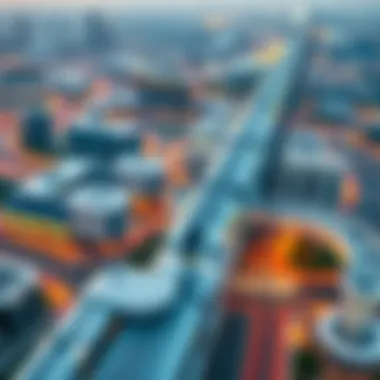

Intro
The Metro system in Dubai stands as a remarkable feat of engineering and urban planning, illustrating the city's rapid transformation into a global metropolis. It provides an efficient means of transportation for millions of residents and visitors alike, contributing significantly to the urban landscape and the real estate market. With an extensive network spanning various parts of the city, the Metro has not only simplified commutes but also altered the dynamics of where people choose to live and invest.
Grasping the essence of the Dubai Metro goes beyond understanding its routes and operations. It delves deep into the history of how this ambitious project came to be and why it remains a cornerstone of Dubai's infrastructure. This article aims to uncover the layers beneath the infrastructure, providing insights into current real estate trends influenced by the Metro, investment opportunities for those keen on property ventures, and the broader implications for urban development.
So, whether you're a property investor, a curious tenant, or simply someone fascinated by the transit revolution in Dubai, there's ample to discover. Let's embark on this journey, starting from an analysis of the market shaped by the Metro's reach and presence.
Prelude to the Dubai Metro
The Dubai Metro plays a pivotal role in the urban development and transportation landscape of Dubai. Given the city’s rapid growth, the establishment of a modern metro system was an imperative step to ease traffic congestion and enhance the overall quality of life. Today, the metro system is not just a mode of transportation but a symbol of Dubai's innovation and ambition.
It provides a cost-effective, reliable, and efficient means of traveling through one of the most bustling cities in the Middle East. For investors, realtors, developers, buyers, and renters, understanding the intricacies of the Dubai Metro is crucial. It informs decisions about where to live, work, and invest.
Historical Background
The foundation of the Dubai Metro is rooted in the extensive foresight of the local government. The journey began in the early 2000s when officials recognized the need for a robust public transportation system to accommodate the burgeoning population and enhance the economic landscape. The official launch of the project took place in 2005, and by 2009, the Red Line opened, marking a significant milestone in Dubai's transport history.
The initial vision stemmed from the city’s ambition to establish a high-tech transit system, featuring automated, driverless trains. The project aimed not only to alleviate traffic woes but also to position Dubai as a major global player in urban mobility solutions. Progress was swift, and the system expanded to include multiple lines and numerous stations, reflecting Dubai’s rapid growth and modernization.
"The Dubai Metro does not just transport people; it carries the ambitions of a city that dares to dream big."
Current Overview
Today, the Dubai Metro is a marvel of engineering and design. Stretching over 75 kilometers with two main lines—the Red Line and the Green Line—it connects key areas of the city, including major shopping hubs, business districts, and residential neighborhoods. The metro accommodates about 600,000 riders daily, facilitating easy movement across urban landscapes.
The system boasts 49 stations, many of which are strategically located near key attractions. This accessibility makes it an integral part of daily commutes for residents and a convenient option for tourists. Furthermore, the metro is complemented by other public transport services, such as buses and taxis, which enhances its overall functionality.
Key features of the Dubai Metro include:
- Automated and driverless trains
- Modern and clean stations equipped with facilities
- Multiple service tiers, including Gold Class and Silver Class, providing options based on customer preferences
- Integration with the NOL smart card system for seamless travel across different modes of transport
Overall, the Dubai Metro represents a crucial link in the city's transport infrastructure, playing a significant role in the ongoing development of Dubai as a leading international metropolis. As the city continues to evolve, the metro system will undoubtedly shape its future, illustrating the importance of efficient public transport in urban planning.
Metro Infrastructure
The backbone of any public transportation system resides in its infrastructure, and the Dubai Metro is no exception. The importance of metro infrastructure transcends mere transportation needs, positively impacting urban dynamics, economic growth, and civic cohesion. By understanding its various elements, we can appreciate how the Metro strengthens Dubai’s vibrant urban landscape.
Stations and Routes
Dubai Metro boasts a meticulously planned network that connects key regions across the city. It includes two main lines: the Red Line and the Green Line, with the Red Line being the longer of the two, traversing significant areas like Burj Khalifa and Dubai Marina.
- The Red Line runs from Rashidiya to UAE Exchange, spanning approximately 52 kilometers and featuring 29 stations. This line acts as a lifeline, bustling with commuters traveling to business districts and leisure spots.
- The Green Line, while shorter at around 23 kilometers, connects key areas such as Al Fahidi and Dubai Healthcare City, making it essential for access to education and healthcare services.
Both lines are integrated seamlessly, allowing passengers easy transfers between them. The strategic positioning of stations ensures that even the less mobile citizens can access important services with relative ease.
Notably, the stations themselves are architectural marvels. They are designed with aesthetics and functionality in mind – Dubai Marina station, for instance, reflects the region’s marine-inspired theme. This not only enhances user experience but also serves as a testament to Dubai’s prowess in combining art with infrastructure.
A well-connected metro network opens the door to increased foot traffic, fostering local businesses in areas near stations.
Technical Specifications
Delving into the technical aspects of the Dubai Metro reveals sophisticated engineering principles at work. The Metro features a driverless system, which is a rarity in the world, showcasing both technological prowess and a commitment to innovation.
- The trains are equipped with cutting-edge technology such as Automatic Train Operation (ATO) systems, ensuring high efficiency and punctuality.
- They are comprised of lightweight materials, allowing for energy-efficient operations while carrying heavy passenger loads.
- Safety features like fire detection systems and automated emergency protocols are paramount in this high-capacity environment.
- Each train is capable of reaching speeds of up to 90 kilometers per hour, making it both a speedy and reliable mode of transport.
Moreover, the energy consumption of the Metro has been addressed through an advanced power management system, contributing to a greener urban transportation model.
In essence, the metro’s infrastructure, from the well-planned stations to the highly advanced technological implementations, is a pivotal component that facilitates urban mobility and enhances the quality of life in Dubai. As a result, it preserves Dubai's reputation as a cutting-edge metropolis.
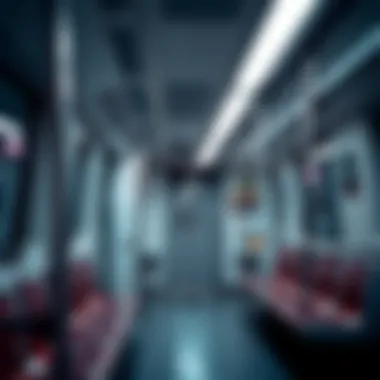

"A robust metro infrastructure not only serves immediate travel needs but shapes the future of urban interactons, weaving together social fabrics and enabling economic growth."
By recognizing the value of this infrastructure, residents and potential investors can make informed decisions about their engagements with the ever-evolving cityscape of Dubai.
Economic Impact of the Metro
The economic implications of the Dubai Metro go far beyond its immediate utility as a public transport system. It's vital for potential investors, residents, and real estate stakeholders to grasp how the Metro affects job creation, investments, and the property market dynamics. As the city expands, understanding these components becomes increasingly crucial, offering insights into the future of urban living in Dubai.
Job Creation and Investments
When the Dubai Metro came on the scene, it was like a new gear in the machinery of the city’s economy. The construction phase alone created a multitude of jobs, not just for local residents but also for skilled workers from around the globe. With an estimated 30,000 jobs generated during the implementation phase, its impact on employment was significant. Beyond construction, ongoing operations continue to provide career opportunities for many. This includes roles in management, maintenance, and customer service.
Moreover, the Metro fostered an environment ripe for investments. As transport nodes, Metro stations have become hot spots for business development. Numerous retail outlets, cafes, and restaurants have sprouted around stations, creating additional employment and boosting local businesses. Investors have recognized this trend, leading to increased demand for commercial properties nearby.
It's also important to consider both direct and indirect impacts. Indirectly, the Metro has encouraged tourism. With easier access to key attractions, hotels have reported better occupancy rates in areas serviced by the Metro. Additionally, as areas become more accessible, property developers are considering projects that cater to this burgeoning demand for living spaces close to public transport options.
"The Metro has transformed not just the way people move around Dubai, but also how businesses and residents interact with the city."
Influence on Property Values
Property values in Dubai have always been a fluctuating landscape, but the Metro’s influence has added a new layer of complexity to real estate dynamics. Areas surrounding Metro stations often see a marked increase in property values. For instance, neighborhoods that were once deemed too remote are now becoming desirable, thanks to convenient access to transit. This has a ripple effect, causing respectable price appreciation in the vicinity of the Metro.
Key factors influencing property values include:
- Accessibility: Properties within walking distance of stations are generally more desirable, driving up prices due to demand.
- Commercial Development: As businesses set up shop in the vicinity, residential properties gain added value thanks to the growth of local services.
- Quality of Life: With enhanced mobility, residents experience greater convenience, raising demand for housing closer to transit options.
Additionally, developers are keen on capitalizing on these trends, often designing residential projects with Metro access in mind. Whether it is luxury apartments in Downtown Dubai or affordable housing in Al Ghurair, the presence of the Metro has become a selling point for potential buyers and renters.
The evolving skyline of Dubai reflects not just architectural advancements but also the need for community-centric urban planning. Homebuyers are increasingly factoring in public transport access into their purchasing decisions, making Metro proximity a critical consideration. This shift underpins the notion that investing in properties near the Metro is akin to investing in Dubai's future.
As the Metro system plans expansions to reach even more neighborhoods, the promise of enhanced property values remains a compelling reason for both investors and residents to keep a watchful eye on Dubai's transit developments.
Public Transportation Integration
Public transportation integration is a key feature to consider when diving into the dynamics of the Dubai Metro. It goes beyond just having a well-functioning metro system; it's about creating a seamless network that connects multiple modes of transport, enhancing the overall mobility of the city. A well-integrated public transport system can lead to greater accessibility, economic convenience, and environmental benefits. These advantages can significantly influence where people choose to live and work, which in turn affects property values and urban development.
Connecting Other Transport Modes
One of the highlights of the Dubai Metro is its ability to connect with other transport modes, such as buses, taxis, and even ferries. This integration is not just an afterthought; it's a carefully crafted strategy aimed at making the entire transport system more user-friendly. For example, major metro stations like Burjuman and Union serve as vital junctions where passengers can easily transfer from the metro to a bus or ride-share options. This interconnectivity is particularly significant in a city like Dubai, where the vast distances can make travel cumbersome.
To illustrate, consider the Dubai Tram system, which operates in parallel to the metro. This tram not only complements the metro lines but also connects to key areas like Jumeirah Beach Residence (JBR). Passengers can hop on the tram after disembarking from the metro, enabling them to reach popular destinations without the hassle of finding parking or navigating congested roads.
- Enhanced Convenience: Passengers can plan their journeys efficiently, knowing they can switch modes as needed.
- Reduced Travel Times: Direct connections allow for quicker commutes, making public transport an attractive option.
- Encouragement to Use Public Transport: By making connections easier, more people might opt for public transport rather than individual vehicles, which can reduce congestion.
"The more integrated the transport, the more likely people will ditch their cars for a ride on the metro," a local transit expert observes.
Future Transport Developments
Looking ahead, the potential for further transport developments in Dubai is promising. The city is not resting on its laurels; instead, it aims to expand its metro network and other transport systems to accommodate future growth. Plans for the Dubai Metro include extending existing lines and possibly introducing new routes to ensure the metro continues to be a linchpin in the city's transport ecosystem.
- The proposed Dubai Metro Route 2020 will connect the metro to the Expo 2020 site, thus facilitating access to significant global events.
- Future innovations could include automated systems and advanced ticketing solutions, which would further enhance interconnectivity and reduce wait times.
In addition, the integration of smart technologies into the transport landscape is on the horizon. Imagine a scenario where passengers receive real-time updates about connections and delays via a single app, greatly simplifying travel logistics. The push towards sustainability is also influencing these developments, with electric buses becoming an essential part of the mix.
In summary, the integration of public transportation in Dubai is designed to create a cohesive and efficient network that not only benefits residents but also attracts visitors and investors alike. As this city continues to grow and evolve, so too will its public transport systems, reinforcing Dubai's status as a global hub.
Social Implications of the Metro System
The Dubai Metro system is not just a public transportation project; it stands as a testament to how infrastructure can fundamentally alter social dynamics in a rapidly growing metropolis. At its core, the Metro serves as a vital link that connects diverse communities across the city, effectively transcending socioeconomic barriers and promoting inclusivity. Understanding the social implications of the Metro system reveals its role in shaping everyday lives in Dubai, and this exploration is crucial for potential investors and residents alike.
Improving Accessibility
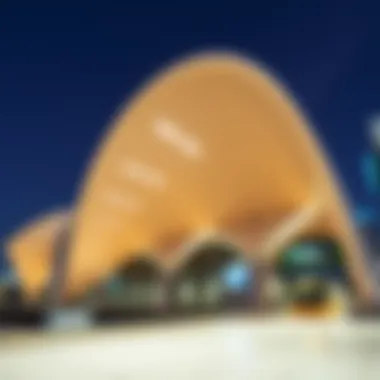
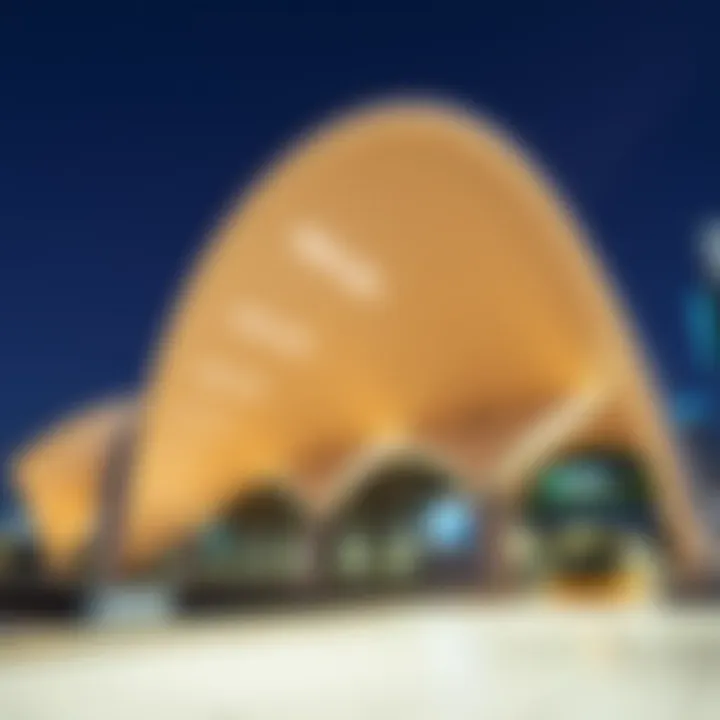
One of the most profound effects of introducing the metro is improved accessibility. With numerous strategically placed stations, the service directly connects residential areas to key commercial hubs, educational institutions, and healthcare facilities, making daily commutes less burdensome. For instance, a resident in Al Qusais can hop on the Metro and be in Dubai Marina within half an hour, a journey that would otherwise take much longer by road due to the city’s notorious traffic.
Public transport has always been a lifeline for many—students heading to university, workers commuting to offices, and tourists exploring the city. Accessibility here is not merely about physical distance; it’s about ensuring that individuals from all walks of life have the opportunity to participate in urban life. The metro effectively democratizes urban mobility, allowing even those without private vehicles or those who prefer sustainable commuting options to navigate the city with ease. It’s therefore important to note that the benefits of the Metro reach beyond convenience; they foster greater economic participation among residents.
Moreover, initiatives aimed at making stations more accessible for persons with disabilities have been implemented. Features like tactile pathways, elevators, and braille signage are not just thoughtful additions. They signal a deeper commitment to inclusivity, which is critical in an increasingly diverse urban landscape. By breaking down these barriers, the Metro plays a pivotal role in meeting the needs of all community members.
Enhancing Urban Mobility
Urban mobility in Dubai has been transformed since the inception of the Metro. The integration of the Metro into the broader transport network, which includes buses, taxis, and trams, creates an effective multi-modal system that saves time and reduces congestion. With rapid transit options, individuals can move quickly through the city, improving overall productivity. As such, residents benefit from a heightened quality of life.
In practical terms, the Metro has significantly alleviated the notorious gridlocks that characterize Dubai’s roadways during peak hours. The system is designed to accommodate a high volume of passengers, and as ridership increases, traffic-related frustrations decrease. Moreover, some studies suggest that areas serviced by the Metro have seen a reduction in carbon emissions due to lower reliance on private vehicles.
A notable example of this can be seen in the area around the Mall of the Emirates Station. An influx of shoppers utilizing the Metro not only lightens the traffic load in the vicinity but also stimulates commerce at various establishments along the route. This positive ripple effect speaks to how enhancing urban mobility through public transit networks can uplift entire neighborhoods, furthering economic development and fostering a vibrant urban ambiance.
"Public transport not only provides a means of getting from point A to B but transforms the connections within communities, playing a pivotal role in creating a unified urban fabric."
By promoting efficient public transit options, the Dubai Metro contributes not only to economic development but also to social cohesion and community building. As more people utilize the Metro, the streets become a shared space for different cultures to converge, paving the way for a more integrated city life.
To summarize, the social implications of the Metro system in Dubai extend far beyond transportation. The improvements in accessibility empower residents, giving them the freedom to engage with the city fully. Enhanced urban mobility reduces environmental impacts and fosters community connections, laying the groundwork for a more inclusive and vibrant city. As Dubai continues to grow, the lessons drawn from these social implications become vital for guiding future urban development policies.
Environmental Considerations
Understanding the environmental impact of the Dubai Metro system is crucial as it represents a large-scale infrastructure with significant implications for urban sustainability. Certain specific aspects are intertwined with how much benefit the metro system brings to not just individual commuters but also the larger ecosystem, urban planners, and even the business realm.
Not only does the Dubai Metro serve to connect various areas across the city, but it also holds the potential to decrease reliance on individual vehicle use. This can lead to a notable drop in vehicular emissions, thus contributing to cleaner air quality.
Sustainability Practices
Sustainability is at the forefront of modern urban planning, and the Dubai Metro is no exception. A variety of sustainability practices have been implemented in its design and maintenance. For example:
- Use of Recycled Materials: The construction of the metro system incorporated recycled materials whenever feasible. This helps divert waste from landfills, aligning with the broader goal of promoting a circular economy.
- Energy Efficiency: The trains are designed to optimize energy usage, employing regenerative braking systems that convert kinetic energy back into electricity. Such systems contribute to lowering operational costs and energy consumption.
- Water Conservation: Water-efficient landscaping around metro stations reduces the demand for irrigation and helps preserve local water resources.
These practices demonstrate a commitment to environmental stewardship, reinforcing the system's role as a model for future infrastructure projects.
Reducing Carbon Footprint
Reducing the carbon footprint is paramount in today’s climate-conscious environment. The metro system utilizes a range of strategies aimed at meeting this objective:
- Reduced Vehicle Emissions: By providing a reliable alternative to car travel, the Metro helps decrease the number of cars on the road, thereby lowering greenhouse gas emissions.
- Local Sourcing of Materials: Sourcing materials locally minimizes transportation emissions, effectively shrinking the carbon footprint associated with the construction and maintenance of the metro.
- Incorporation of Renewable Energy: Future expansion plans include the integration of solar panels at stations, further enhancing the sustainability aspect by harnessing renewable energy resources.
Given that urban transport contributes significantly to global emissions, such developments can play a crucial role in mitigating climate change.
The Dubai Metro serves as not only a transportation network but a bold statement on the importance of environmental sustainability in urban planning and development.
For additional insights into sustainable urban transport, you can visit resources like Wikipedia or Britannica.
**
Challenges Faced by the Metro
The metro system in Dubai, despite its many advantages, is not without its share of challenges. Understanding these issues is vital for stakeholders like investors, realtors, and city planners, as it directly effects operational efficiency and user satisfaction. Addressing these challenges not only helps maintain the system's integrity but also enhances the overall commuting experience for thousands of daily users.
Operational Hurdles
From the outset, the metro has faced a number of operational hurdles. One significant issue has been the scheduling and frequency of train services. During peak hours, congestion can lead to longer wait times, frustrating commuters and steering them towards alternative transport options. This can be particularly problematic in a city like Dubai, where rapid population growth continually increases the demand for efficient transport.
Moreover, technical challenges often arise in maintaining the high-tech systems that underpin the metro. These include software glitches, maintenance schedules, and the need for regular updates to ensure safety standards. Any hiccup in these areas can lead to disruptions in service, creating a ripple effect that impacts everyday users and undermines public confidence in the system.
"The effective running of the metro system is crucial, as it connects the heart of Dubai with its outskirts, allowing both residents and tourists to navigate the city seamlessly."
Public Perception and Usage
Public perception plays a pivotal role in the utilization of the metro. Some residents may still prefer private vehicles due to concerns about cleanliness, safety, or efficiency. There are also lingering misconceptions about the metro's coverage area and its ability to meet the needs of various demographics.
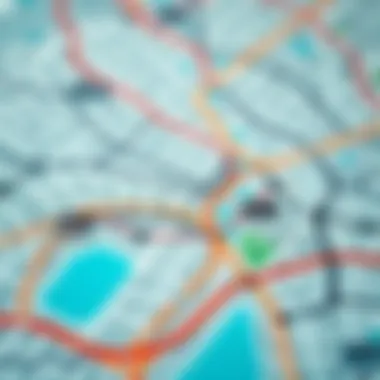

To counter these perceptions, effective marketing and community engagement are essential. Initiatives that showcase the metro's benefits, such as its affordability, eco-friendliness, and convenience, can sway public opinion. Engaging with local communities, gathering feedback, and continuously improving services will help encourage a greater number of users to choose the metro as their preferred mode of transport.
Overall, tackling operational issues while enhancing public perception is crucial for the metro's longevity and success in Dubai’s bustling urban landscape.
Comparative Analysis with Other Metro Systems
When examining the efficiency and overall impact of the Dubai Metro, it's crucial to put it in perspective by drawing comparisons with other notable metro systems around the world. This analysis sheds light on unique strengths, operational practices, and various challenges that shape each network, ultimately allowing stakeholders in Dubai—whether they are investors, developers, or everyday commuters—to grasp the intricate dynamics at play.
Global Benchmarking
To assess how Dubai’s Metro stands up against its global counterparts, we look at several factors such as ridership numbers, investment levels, and operational efficiency. The metro systems in cities like Tokyo, London, and New York frequently come to mind.
- Tokyo Metro is often recognized as the busiest in the world, showcasing a staggering 9.5 million ridership per day. Its efficiency stems from meticulous time management and service reliability.
- London Underground, a historic marvel, combines innovation and tradition, serving around 5 million riders daily, reflecting a blend of old and new technological practices.
- New York City Subway stands out for its vast reach across five boroughs, with about 5.6 million users each day, emphasizing connectivity across diverse neighborhoods.
The Dubai Metro, in contrast, is relatively recent but is rapidly gaining traction. As of 2023, it serves about 700,000 passengers daily, a figure that signals significant growth potential. While not at the same scale as these giants, it’s crucial to note that the investment per kilometer in Dubai has been substantial. The Metro was built with a price tag nearing $7.6 billion for 75 kilometers, which translates to an average cost of around $100 million per kilometer—one of the highest in the world.
This high investment is indicative of the Emirate’s commitment to adopting cutting-edge technology and design principles. The result is a modern, driverless metro system that is not just about transportation but reflects the city's ambition to integrate sustainability and efficiency into daily life.
Lessons Learned
Critically analyzing the Dubai Metro alongside other systems reveals valuable lessons that could shape its future evolution and mitigate potential challenges. One can observe:
- Service Utilization: Like many cities, Dubai Metro has faced peaks and valleys in ridership. Observing how other cities manage rush hour pressures can inform Dubai’s strategies. Implementing dynamic pricing or enhancing peak-hour services could be solutions.
- Service Integration: Cities like Stockholm have excelled in packing various transport modes together—buses, ferries, and trains seamlessly linking to the metro. Learning from such integration can bolster Dubai Metro’s role in a broader transport ecosystem.
- Public Engagement: Engaging with residents to enhance public perception is key. The MTR in Hong Kong showcases effective passenger engagement tactics that create a loyal ridership. Dubai can adopt similar strategies to promote increased usage.
- Sustainability Goals: Analyzing successful efforts in places like Amsterdam, the integration of bike-sharing programs and electric buses creates a multi-modal transport environment. This concept can resonate well with Dubai’s larger sustainability aspirations.
In summary, the comparative analysis of the Dubai Metro with other global metro systems is not merely about numbers; it's a reflection of broader urban dynamics at play. It underscores the importance of learning and adapting, enabling the metro to evolve continuously, catering to the community's needs while contributing positively to the economy and environment.
By systematically examining these components, stakeholders can anticipate challenges, leverage opportunities, and push the boundaries of what the Dubai Metro can become in the interconnected urban fabric of tomorrow.
Future of the Metro System
Dubai's Metro system stands at a pivotal juncture where ambitious expansion and innovative technology converge to reshape urban travel. As the city scales toward a more interconnected lifestyle, recognizing the importance of the Metro’s future becomes essential for various stakeholders such as investors, realtors, developers, buyers, and renters. This section delves into the expansion plans and technological innovations that promise to enhance not only the Metro’s operational effectiveness but also the livability in this vibrant metropolis.
Expansion Plans
As Dubai continues to grow, the need for an expanded metro system is glaringly obvious. The leaders of this city are all too aware of the congestion challenges faced daily by commuters, making the need for additional lines not just a convenience but a necessity. Future expansion plans include:
- New Line Extensions: The Dubai Metro is expected to add more lines, extending its network beyond current boundaries, to neighborhoods that are currently underserved. The goals in mind are to create a seamless urban mobility experience.
- Increased Station Capacity: Renovations of existing stations to handle higher passenger volumes will minimize overcrowding during peak hours. This will ensure that the system remains user-friendly and efficient.
- Integration with Future Developments: Plans are in the works to connect the metro with the upcoming Dubai Creek Tower and other major projects, ensuring ease of access to these major attractions.
Implementing these expansion plans is crucial not only for transportation but for stimulating property developments and local economies around newly added stations. The anticipated increase in accessibility is expected to bolster property values dramatically in surrounding areas.
Technological Innovations
The future of the Metro system does not solely hinge on physical expansion; it also critically relies on integrating cutting-edge technology. Technological innovations will not only enhance operational efficiency but also significantly upgrade the travel experience for commuters. Some notable advances being planned include:
- Smart Ticketing Solutions: The introduction of NFC (Near Field Communication) and mobile wallet capabilities will make fare payments easier and more secure. Commuters will enjoy the convenience of simply tapping their devices, avoiding long lines at ticket machines.
- Real-Time Updates: Implementation of real-time tracking systems will keep users updated on train schedules through mobile applications. The potential for commuters to plan their journeys based on live data fosters a more reliable transportation experience.
- Automated Systems: There are plans for enhanced automation within the metro, including driverless trains that can improve safety and efficiency, reducing operational costs while increasing service frequency.
"Technological innovation in metro systems is no longer just an option; it's a prerequisite for urban success."
Overall, these innovations will not only improve the overall efficiency of the Dubai Metro but also greatly enhance the user experience. Investors and developers must keep a keen eye on these advancements as they could signal a significant shift in property trends and urban living dynamics.
By emphasizing expansion and technology, the Dubai Metro will not just be a mode of transport; it is poised to become a fundamental component that drives urban development, economical health, and social connectivity in Dubai. As the City of Gold continues to evolve, so too will the Metro—leading the way into a more accessible and integrated future.
Finale
Wrapping up this exploration of the Dubai Metro, it's quite evident that this system is not just a mode of transport but a fundamental feature reshaping the urban landscape of Dubai. The discussion highlights several key elements, showcasing the metro's influence on accessibility, economic vitality, and overall urban mobility.
Recap of Key Points
- Historical Significance: The birth of the metro has marked a significant milestone in Dubai’s journey towards modernity and efficiency in public transport.
- Infrastructure and Accessibility: Thoughtful design and strategic placement of metro stations have made urban centers more reachable, both for residents and tourists.
- Economic Influence: Boosting property values, the metro has fundamentally altered the real estate dynamics, making areas once considered outskirts desirable locations.
- Environmental Considerations: By promoting sustainable transit, the metro contributes to lower emission levels, playing a role in Dubai’s environmental footprint reduction.
- Challenges and Opportunities: Balancing operational hurdles and public perception while venturing into the future holds promise as well as demands innovation.
To wrap up, the Dubai Metro is not only a testament to engineering prowess but also an essential player in urban management, positioning the city as a forward-thinking global hub. This interconnectedness of transport facilities is indicative of a larger strategy aimed at enhancing the quality of life for all its residents and visitors.
Final Thoughts on the Metro's Role in Urban Development
Considering the trajectory Dubai has taken, the Metro’s role is undeniably pivotal. It acts as the backbone of the city's public transport system. However, its real value goes beyond just moving people; it enhances the overall urban experience.
- Catalyst for Urban Growth: The metro districts are usually bustling with commercial activity, often becoming focal points for social interactions and economic transactions.
- Land Use Optimization: By influencing land use patterns, the metro encourages higher density developments around key stations, contributing to a vibrant urban environment.
- A Framework for Future Expansion: The continuous plans for expansion and the integration of technological innovations within the metro future solidifies its role as a hallmark of Dubai’s commitment to evolving urban design.











